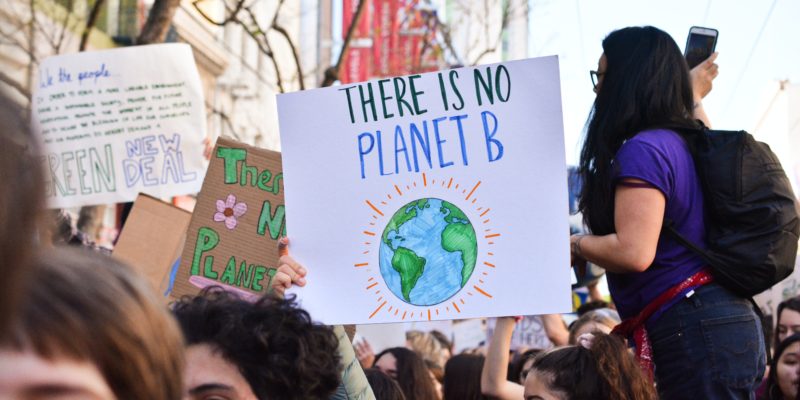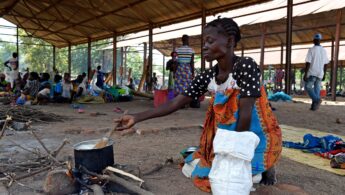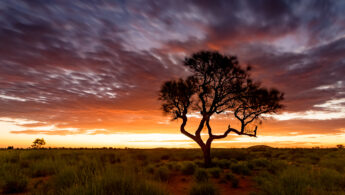The most vulnerable and marginalised are hit first and hardest by the climate crisis. Climate change impacts could further exacerbate marginalisation by, among other things, intensifying the disregard for black lives, worsening the plight of trans communities, sidelining the homeless and perpetuating racist refugee rhetoric. Through a series of case studies, this briefing illustrates how communities are joining forces to show that climate change does not impact people equally. The way an individual experiences climate change is influenced by many intersectional factors, including race, gender, power and poverty.
Poverty, equity, homelessness and climate justice
- Debt activists and climate groups unite in the call to write off international climate debt: Unjust debt is connected to the wider problem of inequality, as very poor countries have limited access to global financial markets. Current international debt mechanisms can easily lock them in ‘debt traps’, while lenders often ask for important national assets as collateral. The Jubilee Debt Campaign has run several campaigns on the connection between debt and climate change, arguing that rich countries are morally obligated to help, in particular to Small Island Developing States that are both heavily indebted and bear the brunt of climate damages. The Jubilee Debt Campaign joined several climate groups last year in demanding a fair and climate-centred post-pandemic recovery. Among the demands was a call for the immediate cancellation of debt payments, with the goal of achieving an unconditional debt cancellation for countries in the Global South.
- Climate activists ally with groups demanding fairer COVID vaccine distribution: While some nations are in “vaccine euphoria”, others are seeing a devastating rise in cases. In India, for example, well over 314,000 cases were reported in a single 24-hour period on 22 April, and the trend shows no signs of abating. By late April, a quarter of people in high-income countries had been vaccinated compared to less than 0.2% in low-income countries. Many well-off countries have secured more vaccine doses than they need to cover their own populations. Climate activist Greta Thunberg donated EUR 100,000 from her foundation to vaccine equality and highlighted how the ecological damage we are currently committing is also increasing the risk of pandemics. Other climate groups and research organisations have joined the call for vaccine justice, with some arguing that vaccine inequality risks making the Glasgow COP26 climate negotiations less inclusive and fair.
- Protecting the homeless as the climate crisis exacerbates precarious living in the US: Homelesness is rising in the US as climate disasters like the recent wildfires in California and the coldsnap in Texas become more common. Nearly 60,000 people were experiencing homelesness in the US before the pandemic, and the number of children on the streets is rising. These numbers are likely to have increased, while the number of temporary shelters that host those in the housing crisis – like women and children who are victims of domestic violence or those evicted due to the economic impacts of the pandemic – have fallen. For people who live on the streets or in precarious housing, extreme weather events can exacerbate underlying conditions and upend any hard-won stability. Increasing climate impacts could also push more people out of their homes, onto the streets and into temporary accommodation. A few groups, like Invisible People, the Climate Reality Project and some academics, have initiated conversations on this topic.
Racial, indigenous and climate justice
- Local environmental and justice groups call for an end to environmental racism in South Africa: Climate change is accelerating, with rising food prices and water shortages impacting the country’s poor and working class. Black South Africans are more likely to live on the most damaged land, in polluted neighbourhoods and in less climate-resilient housing compared to their white counterparts. Many also lack access to clean air and water. But a coalition of local environmental groups, including Vaal Environmental Justice Alliance and Earthlife Africa, have joined forces with other organisations, like feminist coalition Womin and local groups focusing on labour justice, to demand a fair end to fossil fuel burning and pollution. On-the-ground groups in South Africa have also pioneered a climate justice charter in which they ask, among other things, for radical, non-racist and gender-conscious climate leadership.
- Reckoning with racism and climate change in US farming: Today, only 2% of US farmers are black, down from 14% in the 1920s. To address the systemic injustices that deny black people land and food sovereignty, a nationwide movement is attempting to reclaim farming. At the same time, the Biden administration is intent on addressing the greenhouse gas emissions from US agriculture, which accounted for more than 10% of the nation’s emissions in 2018. Though discussions on how to marry these communities are ongoing, some cautiously welcomed solutions include establishing a ‘carbon bank’ that will award farmers for increasing soil carbon storage. If done well, this could benefit small-scale black farmers.
- Climate groups call for an end to “fossil fuel racism” in the US: A recent report by Greenpeace charts how people of colour, especially Black Amercians, and people living in poverty bear the brunt of fossil fuel pollution in the US. Many of these communities are also on the frontlines of climate impacts, and recent research has revealed that historical discriminaton has increased the chances of experiencing impacts like extreme heat, asthma and flooding. The report gathers insight from several communities, asking for both the end to, and reversal of, historical environmental injustices. It also advocates for a green economic recovery that leaves no workers behind, as well as the phase out of fossil fuels.
- Youth activists mobilise against climate injustice and environmental racism: The Global Day of Climate Action on 25 September 2020, called for by the Friday’s for Future Movement, placed environmental racism and climate justice in the centre of climate action. More than 3,500 towns and cities in over 150 countries participated in the protests, mostly online, and all activists were encouraged to show the symbol coined MAPA, or Most Affected People and Areas. The symbol represents solidarity with those communities who contribute the least to climate change but suffer the most. The movement also runs an Instagram account centring activists from the MAPA regions, with the aim to elevate their voices and experiences of climate change.
- Indigenous groups lead global climate strikes: In 2019, 250,000 people took to the streets in New York City to ask for faster and fairer climate action. Fronting the protests were a large contingent of indegenous Brazilian leaders and activists, who highlighted the current destruction occurring in the Amazon as wildfires are used to clear land by agri-buisness. While in the halls of the 2019 UN climate summit Artemisa Xakriabá, a 19-year old indigenous climate activist from Brazil, spoke against the unfolding environmental crisis. Indigenous people around the world have a long history as frontline agents of environmental conservation. They have also played an active role in combating climate change through participation in international events, as well as by means of activism and political engagement at both national and local community level.
Gender rights and climate justice
- Climate activist and women’s rights groups call for care work to be centered in the US’s green new deal: There is a critical need to recognise care work as a cornerstone of any green economy and society, according to a new report by The Feminist Green New Deal. Care work can provide jobs for those transitioning out of fossil fuel industries and, on the flip-side, the climate crisis could increase the need for high-quality care. The report argues that societies risk perpetuating gendered power dynamics, which consistently undervalue care work. Without intervention, a predominantly white male hegemony on high-paid clean energy jobs will continue, exacerbating the gender pay gap. The report is fronted by a diverse coalition of women and gender groups, as well as climate organisations, like the Women’s Earth and Climate Action Network (WECAN), MADRE and the Sierra Club.
- Joining forces to demand more space for women in the renewable energy sector: Studies show that utility companies with over 30% female boards have higher profit margins, and that diverse executive boards across sectors outperform all-male ones. But despite the widely recognised benefits of increasing women’s participation, the current energy sector is one of the least gender diverse, and women are responsible for less than 11% of energy-related patents. The renewable energy sector does a little better than oil and gas, employing 32% and 22% women respectively in 2018. It is also crucial that women are part of the growing clean energy industry that should offer fair and rewarding work. Today, a number of initiatives are working to advance women’s role in energy, like Solar Sister, a sub-Saharan African social enterprise that aims to eradicate energy poverty by empowering women through local green jobs, both as leaders and entrepreneurs. Another group set on women’s inclusion and empowerment is ENERGIA, which has carried out research and campaigned on the issue globally. In the UK, the ReWIRE network works to increase the number of women in clean energy leadership roles.
- Trans rights and climate justice groups join forces: Marginalised people are more likely to live in areas vulnerable to climate change, to be poor, and to have resources and assistance denied to them. Marginalisation is also exacerbated in times of crisis. This was observed during Hurricane Katrina in New Orleans when trans people faced discrimination and were even turned away from emergency shelters. Another example was seen after tropical Cyclone Harold in Fiji, where LGBTQ+ people and sex workers were disproportinatley impacted, with their safety hubs and centres wrecked by the storm. Gender-based violence, which also impacts the trans community, also increases after natural disasters. As such, the fight for LGBTQ+ rights is also a battle for climate justice. There are a few groups, like Friends of the Earth and the Sierra Club, who have started talking about how the environmental and climate movement need to integrate trans rights. But more can be done to encourage cooperation and sharing between these communities.
Militarisation, displacement and climate justice
- The peace movement calls for money to be moved from arms to renewables in the UK: Every year, the UK government authorises the sale of arms to over 100 countries across the world, arguing that one benefit is the protection of high-skilled manufacturing jobs in the country. However, the Campaign Against Arms Trade (CAAT) released a report in 2014 arguing that investing in offshore wind and marine energy could produce more jobs than the entire arms industry in the UK. The organisation continues to highlight how real security involves tackling the cause of problems – for instance, the UK’s Ministry of Defence published research last year on how climate change could exaggerate existing threats to international peace and security. As such, CAAT says that if security really is the end goal, the UK should prioritise rapid carbon reduction instead of ramping up the nation’s arms industry.
- Climate activists join human rights defenders to fight for the humane treatment of displaced people: In 2020, Extinction Rebellion protested against increasing border securitisation and racist rhetoric towards migrants and refugees. They join a host of other human rights and climate groups concerned about the increasing threats facing those displaced by the climate crisis. Regulatory frameworks to protect these groups have also been implemented, such as the Sydney declaration providing guidance on managing climate displacement and the UN Human Rights ruling in early 2020 stating that climate refugees cannot be sent home. The US may also be on the brink of defining what a climate refugee is, which could shift refugee policy. Experts agree that there is a clear connection between migration and the climate crisis, though many worry that reductive assumptions drive anti-immigration rhetoric.
Fair employment, labour groups, unions and climate justice
- Indigenious people and Canadian oil workers jointly push for a just transition: Between 2015 and 2017, over 100,000 Canadian oil workers lost their jobs due to crashing oil prices. As a result, the worker-led organisation Iron & Earth was formed, which now consists of more than a thousand local workers and indigenous people. The organisation campaigns on the dual need to tackle the climate crisis and to secure fair work for the community. It does this by building on the ground support for a national climate transition, while continuing to advocate for the rights of local communities. The organisation provides training, resources and networks that individuals need to establish careers in the renewable energy industry.
- A coalition of unions, climate groups and workers call for fairer public transport: A global campaign, fronted by groups like Public Services International (PSI), the International Trade Union Confederation (ITUC), the International Association of Public Transport (UITP), C40 Cities Climate Leadership Group, Women in Informal Employment Organizing and Globalizing (WIEGO) and Greenpeace, is demanding post-pandemic investments in public transport. They argue that public transport is a centrepiece of fair societies, as many people rely on it to get to where they need to go, be it to work, hospitals or kindergartens. Public transport is also a foundation of sustainable development and supports the infrastructure of green cities, a crucial part of solving the climate challenge. Most carbon emissions already come from cities, and today the rate of urbanisation is unprecedented and shows no sign of abating.
- Building local support for renewable energy on the Orkney Islands: The Scottish Orkney Islands, home to about 22,000 people, previously imported all their power from fossil-fuel sources. Today, however, the region produces 120% of its own needs from clean wave and tidal power, as well as community-owned wind turbines, and sells the excess. A membership organisation, The Orkney Renewable Energy Forum, was instrumental in bringing together individuals, researchers and companies to support the transition to a self-sustained renewable society. Established in 2000, the forum became involved in a range of local renewable initiatives, culminating in the opening of the first locally-owned wind turbine in the UK. Overall, investment on the island created 300 new jobs and the area is now a leading knowledge hub for developments in wave and tidal energy.
- Scientists mobilise for climate justice: The ‘March for Science’, formed by an international community of scientists, science advocates, teachers and parents, took part in the youth’s global climate strikes. Ahead of the strikes, tens of thousand scientists signed an open letter in which they supported the “enormous mobilisation” of youth grassroot climate movements. The March for Science is an annual event, where scientists across the world take to the streets to protest a wide range of science issues, but central is the call for support, research and respect for environmental and climate scientists. In 2017, the protests drew more than one million people in over 600 cities.
Intersectionality is inherent to many social movements
Climate groups are now adopting a more intersectional approach to the climate crisis, recognising that disadvantage is the result of many interacting systems of oppression. While this is coming to the fore in the climate movement, intersectionality is already – and has been for a long time – inherent to many social movements. The history of intersectional organising stretches back several decades and is the legacy of feminists of colour who have sought to elevate those voices largely ignored, silenced and sidelined.
In summary, the increasing number of coalitions and collaborations show how fighting for social justice is increasingly at the heart of climate action and that joint activism is taking many novel forms today. These case studies exemplify how looking at the climate crisis through a social justice lens – which permits space for complexity and nuance – is making the climate movement more diverse, effective, inclusive and just.


